Whether you’re planning to buy or rent, here is everything you need to know about apartments in Norway.
Welcome to our comprehensive guide to apartments in Norway. Whether you're moving to this beautiful country or simply looking to relocate within it, this article will help you navigate the ins and outs of Norway’s property market.
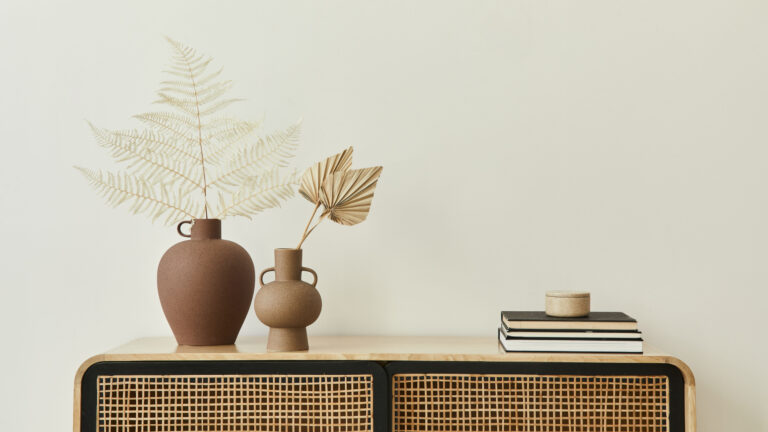
We'll explore the various types of Norwegian apartments, from a charming historic bygård in the heart of Oslo, to a modern, energy-efficient new build with all the modern amenities.
We'll also dive into the nuances of renting versus buying, and provide helpful tips on apartment sizes, costs, and the renting process.
So sit back, get cozy, and join this exciting journey through the diverse world of Norwegian apartments.
An introduction to Norwegian apartments
Norwegian apartments range from rustic old buildings, full of character, to hypermodern, energy-efficient smarthomes. For the purpose of this article, we divided Norwegian apartments into four main categories.
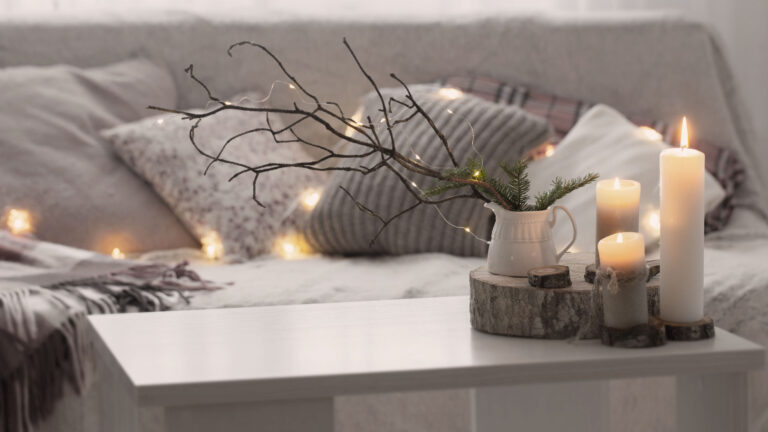
The list is not exhaustive but it encompasses a large share of what’s available out there.
Bygård
This is your traditional, uber-European apartment block. Typically built between 1840 and 1910, the units in these blocks vary in size and quality depending on what refurbishments were carried out over the decades.
They are full of historic charm and are often located in attractive locations, which can be a bit noisy. Due to their age, the inside can vary from draughty and shabby to swanky and modern, depending on the amount of TLC their successive owners have given them.
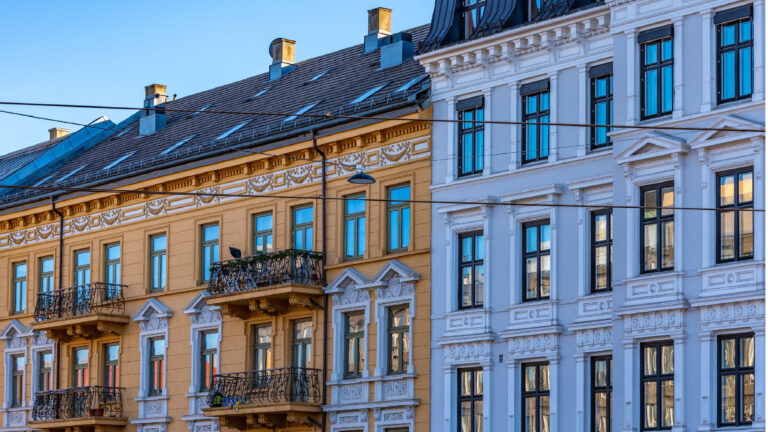
You will find loads of these in Oslo, and quite a few in Bergen and Trondheim. Smaller cities like Ålesund also have some.
The post-war nondescript blocks
Countless apartment blocks were built in the 1950s and 1960s, to meet a skyrocketing housing demand during the post-war rebuilding period.
With their square, empty-looking windows, they don’t look like much from the outside, but they often have balconies (which a bygård usually lacks) and sizeable rooms.
Because of the period they were built in, they are typically not quite as central as the bygård, but “not quite as central” in Oslo is still not necessarily very far.

The new builds
These are built during the past 15-ish years. Unlike the units in the previous two categories, they have modern ventilation systems, and high energy efficiency.
What you save in energy bills will likely disappear in mortgage or rent though. Expect top-tier prices for apartments in such buildings.
The sokkelleilighet / hybel
Perhaps the least appealing of all the types we have described, the sokkelleilighet (basement apartment) can be an attractive option if you are looking to rent and want to save money.
Beware of unscrupulous owners, or even well-intentioned ones who don’t know the rules. More on how to spot these below.
Known as a hybel, such studio apartments are found in detached houses, usually dating from any time after the war.
More recent ones are more cleverly done. The older ones are often an afterthought by owners looking to make extra money or wanting space for an elderly relative.
Speaking of relatives, be aware that this type of rental is more liable to a sudden termination of the contract by the owner if they decide that they need the apartment for a relative. They can also terminate the contract to do extensive renovations.
The notice period specified in the contract still has to be respected of course, and this kind of termination can happen in any type of rental. But it is more likely to happen in cases where the owner only has the one sokkel apartment to rent out, than when they own a building full of units.
The size of Norwegian apartments
Norwegian apartments are somewhat smaller than their American counterparts, and comparable in size to British flats.
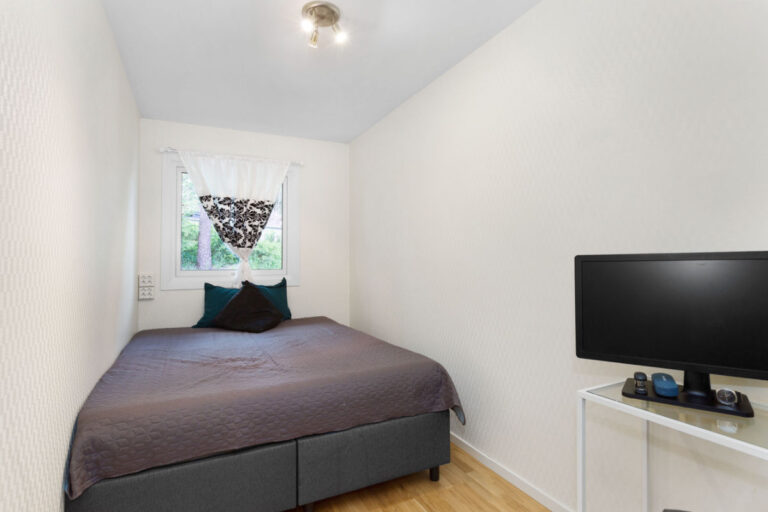
One important detail to know about when looking for one is how Norwegians refer to apartment sizes. In the US and UK, it’s customary to “count the bedrooms”. You’ll refer to an apartment as a “one-bedroom apartment”, for example.
In Norway, a one-bedroom apartment is referred to as a “to-roms leilighet” (literally: two-room apartment). Essentially, Norwegians count the living room and kitchen as one room, and each subsequent bedroom as an additional room.
A tip for our American friends looking to buy or rent in Norway: you will have to start thinking in square metres instead of square feet. Luckily, the conversion is not too difficult: one square metre equates to around 10-11 square feet.
Renting an apartment in Norway
Norwegians have a strong belief that owning a home is inherently better than renting one. Government policies favouring home ownership have made this a self-fulfilling prophecy.
Because of this, the rental market in Norway is smaller and less developed than in countries such as the US or the UK. This means there are comparatively fewer apartments to rent, and many of the available ones are not in apartment buildings.
In fact, as we described above, it is quite common for apartments to be a section of a detached house (typically in the basement of a house, with the owner living on the ground floor).
This, again, comes from a desire to make home ownership easier. Having rental income helps with paying a mortgage.
The cost of rental apartments in Norway
Renting an apartment in Norway is not as expensive as you might think, considering how expensive everything else is in this country.
Of course, everything is relative, but the average Norwegian one-bedroom apartment costs about the same as in the UK, and much less than in the US.
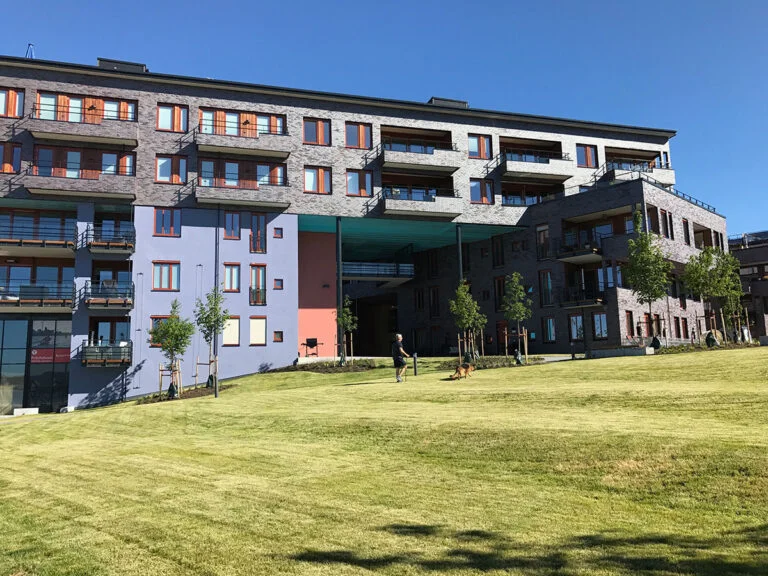
A to-rom (one-bedroom apartment) will set you back, on average 9880 NOK a month (942 USD/759 GBP at the time of writing). Of course, most people don’t live in an “average apartment”, so your experience may vary.
If you’re looking for a one-bedroom apartment in Oslo, expect to pay about 3000 NOK more than the Norwegian average every month. Prices in Bergen and Trondheim are close to the average, while prices in smaller cities can be expected to be below average.
How to rent an apartment in Norway
Finding an apartment to rent in Norway is best done by browsing ads on finn.no, a website that effectively holds a monopoly of sorts on the classified ads market in Norway. You can easily filter your search by area, size and price.
When looking at the ads, make sure to check what the price includes. Some places include things like cable and internet, hot water and heating, or even the entire electricity bill. Also check if the ad mentions anything about included furniture or appliances.
Read more: Scandinavian Furniture
Normally, you will select a place and schedule a visit with the owner or broker. If both parties agree to move forward, the next step is to sign the rental contract.
The contract should look something like this rental contract example from Forbrukerrådet, the Norwegian consumer protection agency. It should contain details about the security deposit, which is an important point.
The security deposit in Norway is massive by international standards. The owner can legally demand up to six times the monthly rent as a security deposit.
Regulation states that the deposit should be placed in a special, security deposit account that serves no other purpose than holding that particular deposit. NEVER agree to anything else.
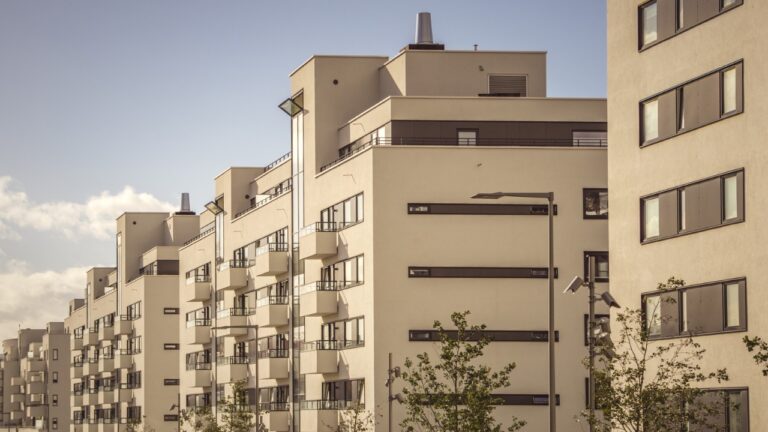
If a house owner wants you to transfer the deposit to any other account, run away and don’t look back, as that is a massive red flag.
The account system is custom-designed to protect both you and the owner, and since the amount is potentially so substantial, you want to be sure things are done correctly.
If you cannot afford the security deposit, be aware that special loans are available to cover it. When you stop renting the apartment, you get your deposit back, with interests, provided that you did not trash the place.
Another detail: check if the contract gives you responsibilities, such as snow removal or washing common corridors or stairs. It is not unheard of for such responsibilities to be shared by all residents of a building.
Buying an apartment in Norway
To buy an apartment in Norway, the best place to start is to browse the ads on – you guessed it – finn.no. There are certain confusing details you need to know about before you start.
The first of these is the type of ownership. Apartments are sold in Norway in two main ways: andelseier and selveier.
Andelseier apartments: owning a share of a building
If an apartment is sold under the andelseier type of ownership (also referred to as borettslag apartments), the buyer is essentially buying a share in a building allowing them to live in their apartment.
This may sound scary, but in reality, it’s very much the same as owning the apartment.
The difference is that the building itself is owned by a separate legal entity (the borettslag, led by a board composed of residents). A borettslag is a housing cooperative that aims to provide its shareholders (members) with the right to use a property in the cooperative's ownership.
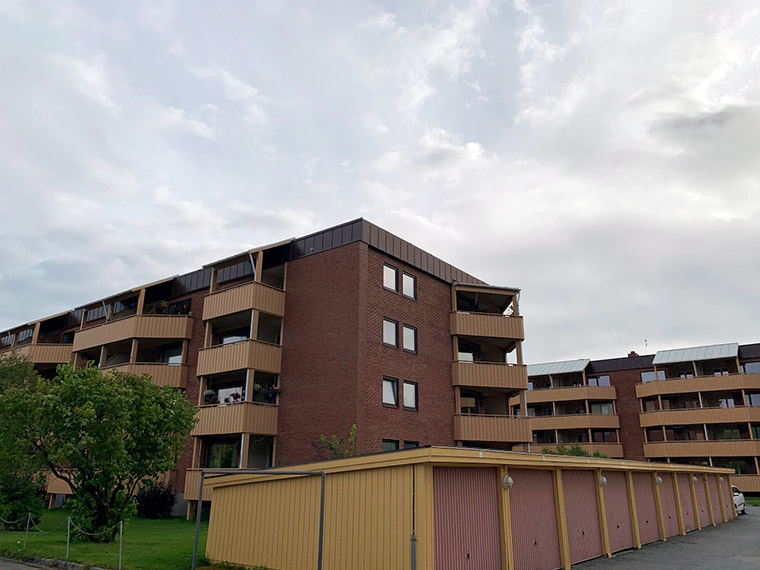
Properties in a borettslag are usually apartments or townhouses/terraced houses, but other types of housing can also be included. All residents of such a building have to contribute to the coop’s common fees, which include maintenance, municipal fees and loan repayments.
One major benefit of purchasing a borettslag apartment is that you don’t need to pay the dokumentavgift (document transfer tax), which amounts to 2.5% top of the total price.
There are drawbacks though, such as having to ask the board for permission if you want to sublet your apartment or do certain types of renovations.
Selveier apartments: your own apartment
If a coop-inspired system doesn’t sound like your cup of tea, you could go for a selveier (self-owned) apartment.
You will have to pay the 2.5% document transfer tax, but in exchange, you really own the place with (almost) no strings attached and get more freedom with regards to renovations.
Doing building maintenance and repairs with this form of ownership can be a bit more complicated. Unlike the borettslag, which is its own legal entity, the board of a building of selveier apartments cannot take up a loan as easily to say, repair the roof.
This means that larger projects are financed either by using the savings accumulated by the building’s board from years of monthly fees, or by asking the various apartment owners to pay for their respective shares. Some of the owners may end up having to get loans to achieve this.
These extra complications sometimes result in maintenance or repairs being delayed if the various owners fail to come to agreement over what needs to be done. In a borettslag, responsibility for the building’s basic maintenance is delegated to the board, which makes the process a bit more straightforward.
That being said, if you prefer not having to ask anyone’s permission to fix up your place, the selveier model is the right one for you. The same applies if you want to rent it out to someone else.
Heating in Norwegian apartments
A very important detail in a Nordic country in these times of energy crisis: check your prospective apartment’s insulation and heating system. Does the apartment have a wood burning stove?
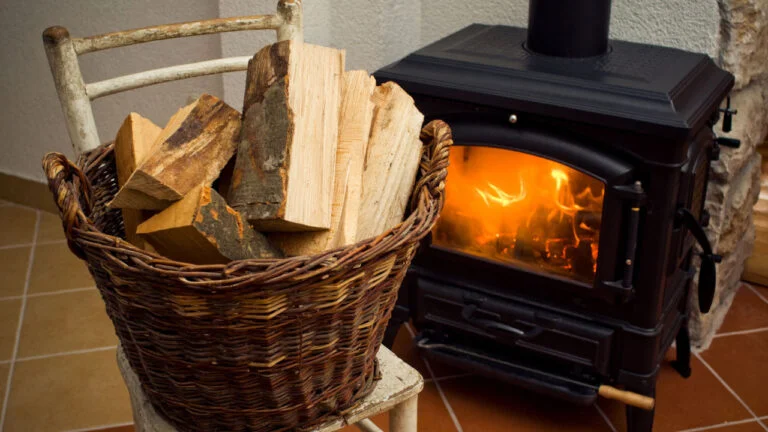
If it does, remember they are not all created equal. Newer stoves heat more efficiently and pollute less.
Does the apartment have old-fashioned, not-so-efficient electric heating (called panelovner in Norwegian). Is it connected to a district heating system?
Or, did one of the previous owners of the place install a heat pump? Energy-efficient air to air heat pumps are massively popular in Norway, but they are often unavailable to people living in borettslag apartments, because of installation practicalities and noise considerations.
Dugnad: a very Norwegian word
Regardless of the ownership type you go for, chances are you won’t escape the ever-present dugnad. A dugnad is a collective, volunteer action by a community that benefits the entire community.
Think old time barn raising – a whole village getting together to rebuild a barn after a fire, but applied to a wider range of situations. In the context of an apartment building, this can mean all hands on deck in the spring to sweep the parking lot, rake the lawn and trim the bushes.
The penalty for not attending is… well, nothing more than shame I suppose. The benefit is an occasion to meet your otherwise not-very-talkative Norwegian neighbours who will suddenly strike up a chat in the midst of working towards a common objective.
Tell us what you think
Have you purchased or rented an apartment in Norway and lived to tell the tale? Are you horrified at the idea of not actually owning your apartment, but instead just owning a share in a building allowing you to live there? Let us know in the comments!


I’m infatuated with living in Norway and look at Housing For Sale on finn.no using the translate feature of Chrome so I can read the listings in English. I’ve be curious to understand the term Felleskost/mnd. Chrome translates this into Shared Meals/month. I’m assuming that they are what’s known as condo fees here in the US but as they sometimes seem quite high in relation to the purchase price I’m a little confused. In a listing I recently looked at they were as high as the estimated loan cost. Anything you could do to help me understand would be appreciated.
A great article and site
Thank you
Felleskost in this case is short for felleskostnader (shared costs). You are correct that these roughly correspond to condo fees in that they include things like daily maintenance, city fees and snow removal. But they also include your part of the payment towards the building’s shared debt. This is common for borettslag apartments. The building’s board can take loans for big projects like switching windows, redoing the roof, etc.
Since you say the felleskostnader were about as high as the estimated mortgage payments, I would guess the apartment you were looking at was a newly built borettslag apartment. New builds of that type typically have a high fellesgjeld (shared loan). The size of this shared debt is definitely something you have to take into account when buying.